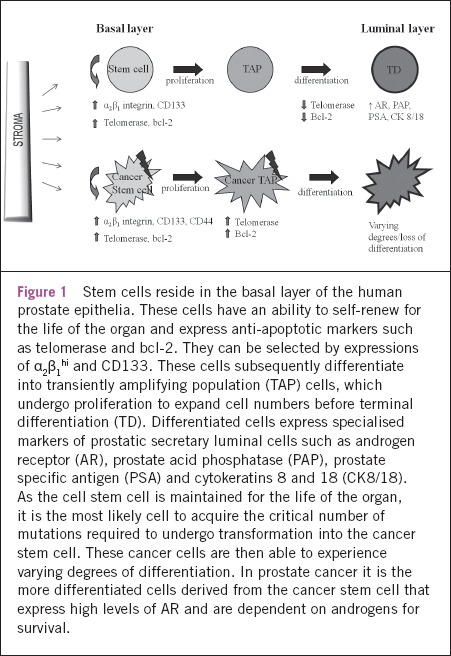Figure 1.

Stem cells reside in the basal layer of the human prostate epithelia. These cells have an ability to self-renew for the life of the organ and express anti-apoptotic markers such as telomerase and bcl-2. They can be selected by expressions of α2β1hi and CD133. These cells subsequently differentiate into transiently amplifying population (TAP) cells, which undergo proliferation to expand cell numbers before terminal differentiation (TD). Differentiated cells express specialised markers of prostatic secretary luminal cells such as androgen receptor (AR), prostate acid phosphatase (PAP), prostate specific antigen (PSA) and cytokeratins 8 and 18 (CK8/18). As the cell stem cell is maintained for the life of the organ, it is the most likely cell to acquire the critical number of mutations required to undergo transformation into the cancer stem cell. These cancer cells are then able to experience varying degrees of differentiation. In prostate cancer it is the more differentiated cells derived from the cancer stem cell that express high levels of AR and are dependent on androgens for survival.
